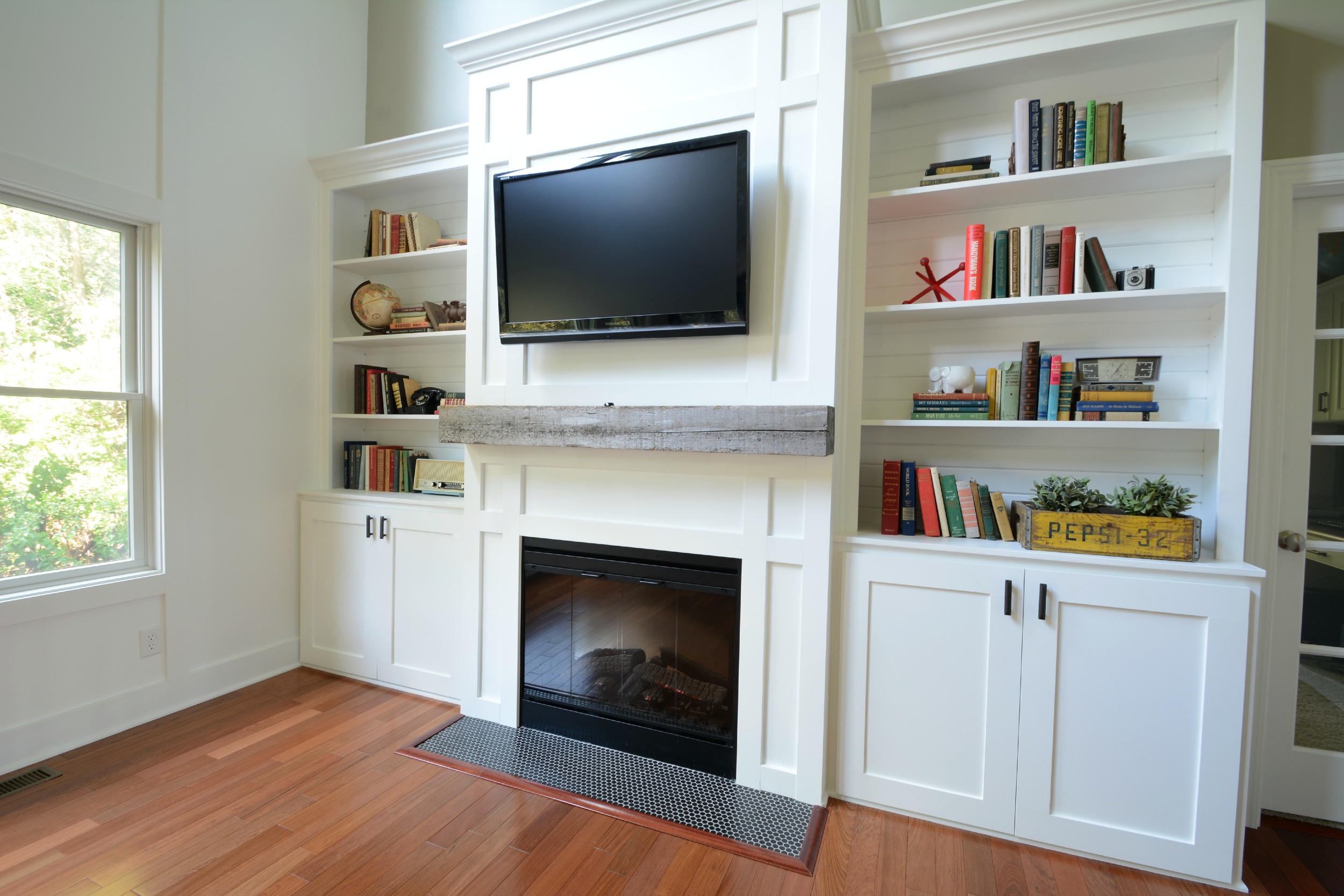Planning and Installation of Built-in Living Room Cabinets: Built In Cabinets Living Room Plans
Building in custom cabinetry can dramatically transform your living room, adding both style and functionality. It’s a project that requires careful planning and execution, whether you’re tackling it yourself or hiring professionals. Let’s delve into the process.
Steps Involved in Planning and Installing Built-in Cabinets
Careful planning is key to a successful built-in cabinet installation. Failing to plan adequately can lead to costly mistakes and frustrating delays. Here’s a step-by-step guide:
- Design and Measurement: Begin by sketching your desired cabinet layout, noting dimensions and considering the existing room features. Precise measurements are crucial; re-measure multiple times to avoid errors. Consider factors like door swing clearances, electrical outlets, and HVAC vents.
- Material Selection: Choose materials that complement your living room’s style and withstand daily use. Options include solid wood, plywood, MDF, and various veneers. Consider durability, cost, and maintenance requirements.
- Cabinet Construction (if DIY): If building your cabinets yourself, carefully cut and assemble the components according to your design. Ensure all joints are tight and secure. This stage requires precision and woodworking skills.
- Installation: Securely attach the cabinets to the wall using appropriate fasteners. Leveling is essential to ensure a professional finish. Use shims as needed to adjust for uneven walls.
- Finishing Touches: Sand any rough edges, apply primer and paint or stain, and install hardware such as knobs and pulls. Caulk any gaps for a clean, finished look. Consider adding crown molding for an elegant touch.
Professional vs. DIY Installation: A Comparison, Built in cabinets living room plans
The decision of whether to hire a professional or tackle the installation yourself depends on your skills, time, and budget.
| Professional Installation | DIY Installation |
|---|---|
| Advantages: Expertise, efficiency, warranty, higher quality finish. | Advantages: Cost savings, personal satisfaction, greater control over design. |
| Disadvantages: Higher cost, less control over design and schedule. | Disadvantages: Time-consuming, requires skills and tools, potential for errors. |
Essential Tools and Materials
Having the right tools and materials on hand streamlines the process and ensures a quality outcome. A lack of preparedness can lead to delays and frustrations.
- Measuring tape, level, pencil
- Saw (circular saw, miter saw, jigsaw), drill, screwdriver
- Wood glue, screws, nails, shims
- Sandpaper, primer, paint or stain, sealant, hardware
- Safety glasses, dust mask, work gloves
Simple Built-in Cabinet Plan for a Small Living Room
Imagine a compact built-in unit spanning 6 feet wide and 72 inches tall. The unit features two sections: a lower section with two doors for storage (36 inches wide, 30 inches tall) and an upper section with open shelving (36 inches wide, 42 inches tall). The materials are medium-density fiberboard (MDF) for the cabinet structure and a light oak veneer for a clean, contemporary look. The shelving is adjustable for flexible storage. The unit is painted a soft, neutral gray to complement a modern living room aesthetic.

